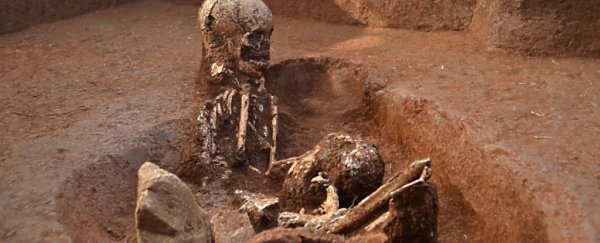At first glance, the Plain of Jars in Laos looks like something out of an Indiana Jones film. The landscape is covered in clusters of stone jars, ranging in size from 1 to 3 metres tall, with some weighing in at over 10 tonnes. But what was their original purpose?
This question has been debated since the site's discovery back in the 1930s, and now we might finally know the answer, because a team of Australian archaeologists has just uncovered 2,500-year-old human remains buried around the mysterious jars.
Until now, researchers have proposed a few different hypotheses for the original use of the jars, but the most widely accepted one is based on evidence from a dig inside a nearby cave in 1930 that pointed to the jars being used to cremate corpses.
Despite the locals arguing that the cave was more likely used as a kiln to churn out the hundreds of jars left scattered around the site, almost a century later, most archaeologists have favoured the cremation hypothesis.
Now, after the first major dig at the Plain of Jars in over 80 years, researchers from the Australian National University might have finally put an end to the debate, finding human bones alongside the jar clusters. The burial connection is now looking a whole lot more convincing.
 Australian National University
Australian National University
"One theory is that they were used to decompose the bodies," says lead researcher, Dougald O'Reilly. "Later, after the flesh was removed the remains may have been buried around the jars. What is now clear is that these are mortuary and were used for the disposal of the dead."
The team also found pits of human bones, which are still unexplained, and even discovered a traditional corpse burial, not dissimilar to today's burial practices. It is, in short, a hodgepodge of burial techniques, which is a pretty unique thing to find in an ancient civilisation.
Since there aren't many objects - aside from a few beads - buried at the site, the team is still unsure about many of the details surrounding the lives of the people buried around the jars. The hope is that genetic analysis could provide greater insight.
The finds have yet to be fully analysed and published, so expect to hear more about them in the future. Officials in Laos are applying to have the Plain of Jars listed as a UNESCO World Heritage site, which would give it greater protection in the coming decades.
